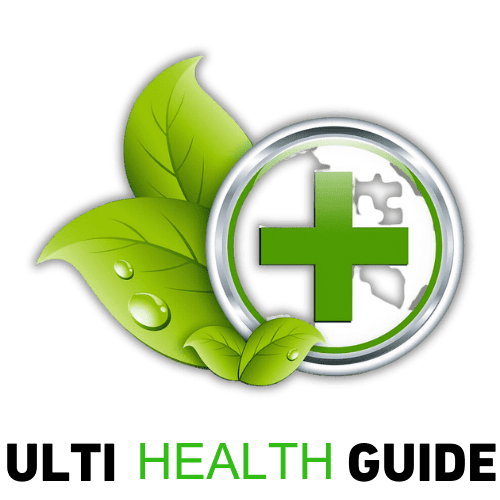Quick Reference
Borderline Schizophrenia: Is it Real?
Borderline schizophrenia is a real mental disorder that is listed in the DSM-5, which is the manual used by mental health professionals to diagnose mental disorders.
If It's Border-Line, Can It Be Real?
In the world of the APA, (American Psychiatric Association), there is no agreement within the association that borderline schizophrenia can stand on its own two feet and be regarded as a distinct and separate mental disorder. Therefore, it cannot be registered as a separate mental disorder in the DSM-V. Schizophrenia is registered. Borderline schizophrenia is not. In DSM-V it is referenced as a subset of schizophrenia.
Is It BPD, STPD, Or Schizophrenia?
Because of its very evident connection to schizophrenia, borderline personality disorder (BPD) became an acceptable diagnosis for those who would previously have been diagnosed as suffering from STPD (Schizotypal Personality Disorder). STPD was out, and borderline schizophrenia was in.
Definition Of Schizophrenia
A chronic mental health condition that affects a person's behaviors, thoughts, and feelings.
Symptoms of Schizophrenia
- Experiencing a significant drop in grades or work performance
- No longer able to focus or concentrate
- Becoming suspicious or paranoid of others
- Spending more and more time alone
- Being passionate about topics or ideas that seem strange to others
- Not showing any emotion
- Have difficulty separating what's real and what's not real in the world
- Struggles to communicate with others
- Not interested in their outward appearance
Definition Of STPD
STPD (Schizotypal Personality Disorder) is a type of eccentric personality disorder where your mannerism and general behavior are considered strange by others.
Symptoms of STPD
- Strange thinking or behavior
- Unusual beliefs
-Discomfort in social situations
- A lack of emotion or inappropriate emotional responses
- Odd speech that may be vague or rambling
- A lack of close friends
- Extreme social anxiety
- Paranoia
10 Things You May Not Know About Schizophrenia
- About 7 out of every 1000 individuals will have schizophrenia in their lifetime.
- Schizophrenia usually presents itself during adolescence or early adulthood.
- There is a greater chance of developing schizophrenia if a family member has it.
- Schizophrenia is caused by a number of genes, not just one.
- Environmental factors play a large part in developing schizophrenia.
- There are 3 categories of schizophrenia.
- Most people with schizophrenia are not violent.
- Substance abuse is the most common co-occurring disorder in people with schizophrenia.
- In conjunction with antipsychotic drugs, a number of non-medical therapies can manage the effects of schizophrenia.
- Research is the key to understanding, treating, and preventing schizophrenia.
Is borderline schizophrenia real or not? The answer to this question has troubled psychologists and those diagnosed with borderline personality disorder for many years.
If it is real, why is it not listed in the DSM-V (Diagnostic and Statistical Manual of Mental Disorders-Five) as a mental or personality disorder? And if it is not real, why are so many psychiatric professionals diagnosing and treating patients for borderline schizophrenia?
Fun fact
Borderline Schizophrenia is not a recognized diagnosis, but therapy offers benefits like improved coping skills, symptom management, and enhanced quality of life.

If it's border-line, can it be real?
In the world of the APA, (American Psychiatric Association) there is no agreement within the association that borderline schizophrenia can stand on its own two feet and be regarded as a distinct and separate mental disorder.
Therefore, it cannot be registered as a separate mental disorder in the DSM-V
Schizophrenia is registered. Borderline schizophrenia is not. In DSM-V it is referenced as a subset of schizophrenia. The problem then and still now is not with the definition of 'schizophrenia', but with the definition of 'borderline'. [1]
Many hold the belief that 'borderline' is simply too vague and a review of the term supports their argument. In the DSM, the term borderline was being used to designate any one of the following criteria in a disorder:
- A clinical disorder is distinguishable by behavioral criteria.
- A milder form of schizophrenia.
- A non-specific term encompassing several atypical affective disorders.
- A psycho-structural distinction: Or, to put it more simply: the meaning is determined by a system of correlations and contrasting of words in the process of their usage in an activity, and not in the process of their comparison as units of a branch of knowledge.
Knowing the disorder exists and that people were being treated for it was not enough to get borderline schizophrenia registered in the DSM-V. It had to pass rigorous trials and investigations before that would happen. Years of trials and investigations have not resolved the issue.
Even when the St.Louis approach, a structured and logical approach that set the standard for diagnostic validity was applied, 'borderline schizophrenia's status as a distinct entity lacked conclusive evidence.
Here's the problem.
"If as a patient, you only exhibit three of the nine most common symptoms of schizophrenia do you have borderline schizophrenia?"
"And if those three symptoms are symptoms A, B & C and not E, F & G do you have borderline schizophrenia?
What if you have six of the nine symptoms are you still borderline? Can they be any six or must they be a specific six?
At what point in the treatment or diagnosis does a patient move from borderline schizophrenia to full-blown schizophrenia?
Get the picture? And this is why as late as DSM-V, published in 2013, borderline schizophrenia was still not registered as a mental disorder.
Is it BPD, STPD, or schizophrenia?
Before the publication of DSM-III in the 1980s, a mental health professional had very little approved and recognized documented information or guidance regarding diagnosing and treating mental personality disorders.
For example, two mental health professionals, miles apart would diagnose two patients exhibiting exactly the same symptoms as having totally different mental disorders.
Throughout America, when it came to mental health, there was no single approved, and documented set of standards or guidelines detailing how those with nervous and mental diseases were to be tested, diagnosed, and treated.
Over time and because of its very evident connection to schizophrenia, borderline personality disorder (BPD) became an acceptable diagnosis for those who would previously have been diagnosed as suffering from STPD (Schizotypal Personality Disorder). [2]
STPD was out, and borderline schizophrenia was in.

Definition and symptoms of schizophrenia
The definition of schizophrenia is "A chronic mental health condition that affects a person's behaviors, thoughts, and feelings." and the nine most common symptoms are:-
- Experiencing a significant drop in grades or work performance.
- No longer able to focus or concentrate. If you're someone who struggles with this, we suggest trying out the Onnit Alpha Brain Premium Nootropic Brain Supplement.
- Becoming suspicious or paranoid of others.
- Spending more and more time alone.
- Being passionate about topics or ideas that seem strange to others.
- Not showing any emotion.
- Have difficulty separating what's real and what's not real in the world.
- Struggles to communicate with others.
- Not interested in their outward appearance. [3]
It is worth noting that these symptoms need time to develop and you would only see the first signs in the early teens. Usually, the symptoms show themselves in people aged between 16 and 30, and it is very rare for young children, under the age of 12, to have schizophrenia.
Rather than a recognized mental disorder, or one of many anxiety disorders, borderline schizophrenia became the preferred terminology for STPD which was a recognized borderline personality disorder.

The definition and symptoms of BDP
The definition of BDP (borderline personality disorder) is a mental disorder that impacts the way you think and might feel about yourself and how those feelings may cause problems with your functioning ability in everyday life.
BPD symptoms are:-
- Terrified of being left alone, abandoned
- Unstable and intense relationships
- Unclear self-image
- Extreme Stress-and stress-related paranoia
- Impulsive, self-destructive behavior - such as reckless driving
- Self-harm or unexplained threats of suicide
- Extreme mood disorders
- Chronic feelings of emptiness [4]
- Intense anger
BDP begins in young adults and gradually improves with age and treatment. If you're having trouble managing your anger, plenty of resources are available to help you.

Definition and symptoms of STPD
STPD (Schizotypal Personality Disorder) is a type of eccentric personality disorder where your mannerism and general behavior are considered strange by others. While STPD is on the schizophrenia spectrum, people do not usually experience psychosis which is a required diagnosis for those with schizophrenia. The symptoms are as follows:-
- Strange thinking or behavior
- Unusual beliefs
- Discomfort in social situations
- A lack of emotion or inappropriate emotional responses
- Odd speech that may be vague or rambling
- A lack of close friends
- Extreme social anxiety [If you're someone with social anxiety, and struggling to make friends - read How To Make Friends When You Have Social Anxiety]
- Paranoia [5]
People with STPD tend to live solitary lives as they have great difficulty building and sustaining emotional relationships. STPD is generic and(13) you are at great risk of developing STPD if you have a first-level relative who has been diagnosed with:
- Schizophrenia
- STPD (Schizotypal Personality Disorder)
- BPD (Borderline Personality Disorder)

10 things you may not know about schizophrenia
- About 7 out of every 1000 individuals will have schizophrenia in their lifetime.
- Schizophrenia usually presents itself during adolescence or early adulthood.
- There is a greater chance of developing schizophrenia if a family member has it.
- Schizophrenia is caused by a number of genes, not just one.
- Environmental factors play a large part in developing schizophrenia.
- There are 3 categories of schizophrenia.
- Most people with schizophrenia are not violent.
- Substance abuse is the most common co-occurring disorder in people with schizophrenia.
- In conjunction with antipsychotic drugs, a number of non-medical therapies can manage the effects of schizophrenia.
- Research is the key to understanding, treating, and preventing schizophrenia.
Questions and Answers
Can Borderline Cause Schizophrenia?
Yes, it can. However, given that borderline schizophrenia is not registered in DSM-5 as a mental disorder it is difficult to establish what separates the two disorders. As a general rule, a diagnosis of schizophrenia will only be made once there are prominent delusions or hallucinations.
Can Borderline Cause Psychosis?
Yes, it can. Recent studies of patients with BPD have found that between 30 & 50% reported psychotic symptoms. In terms of their emotional impact and persistence, hallucinations in borderline patients can be very similar to those of patients with psychotic disorders.







